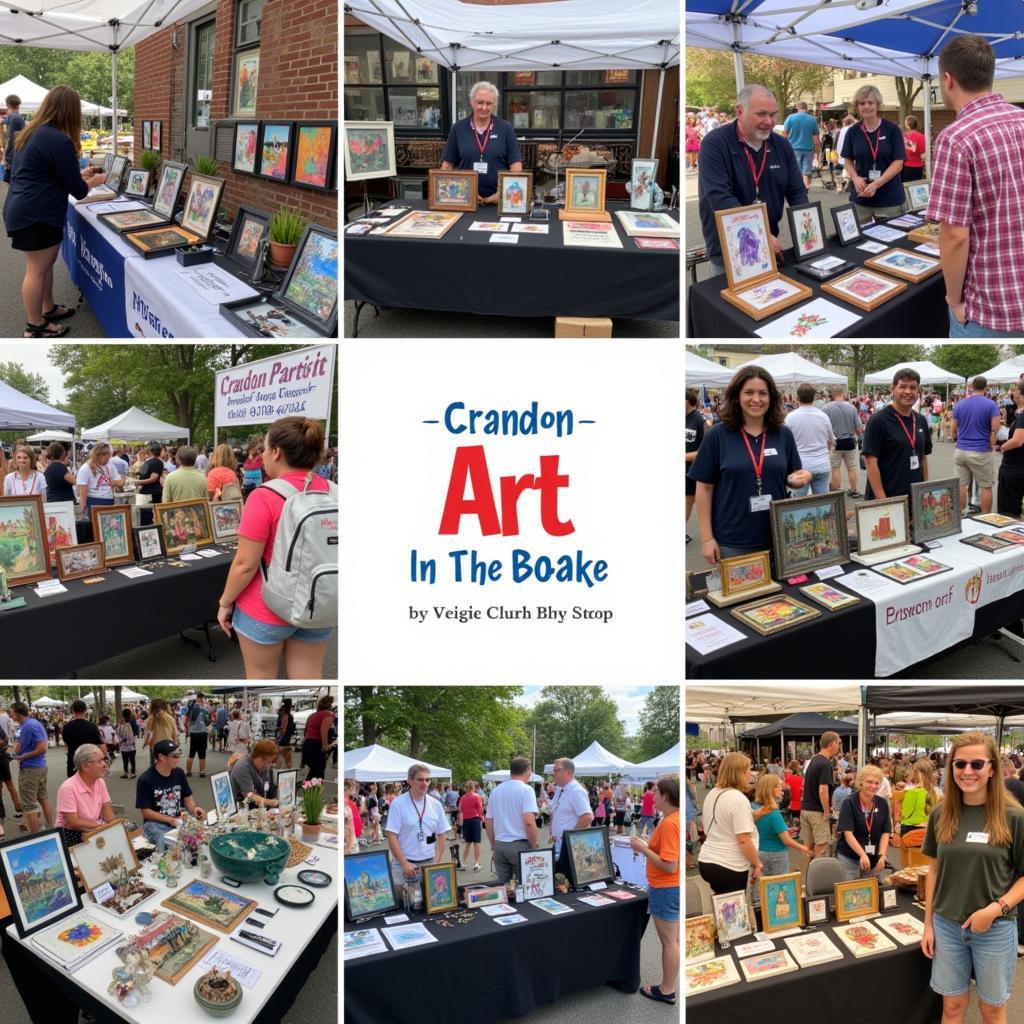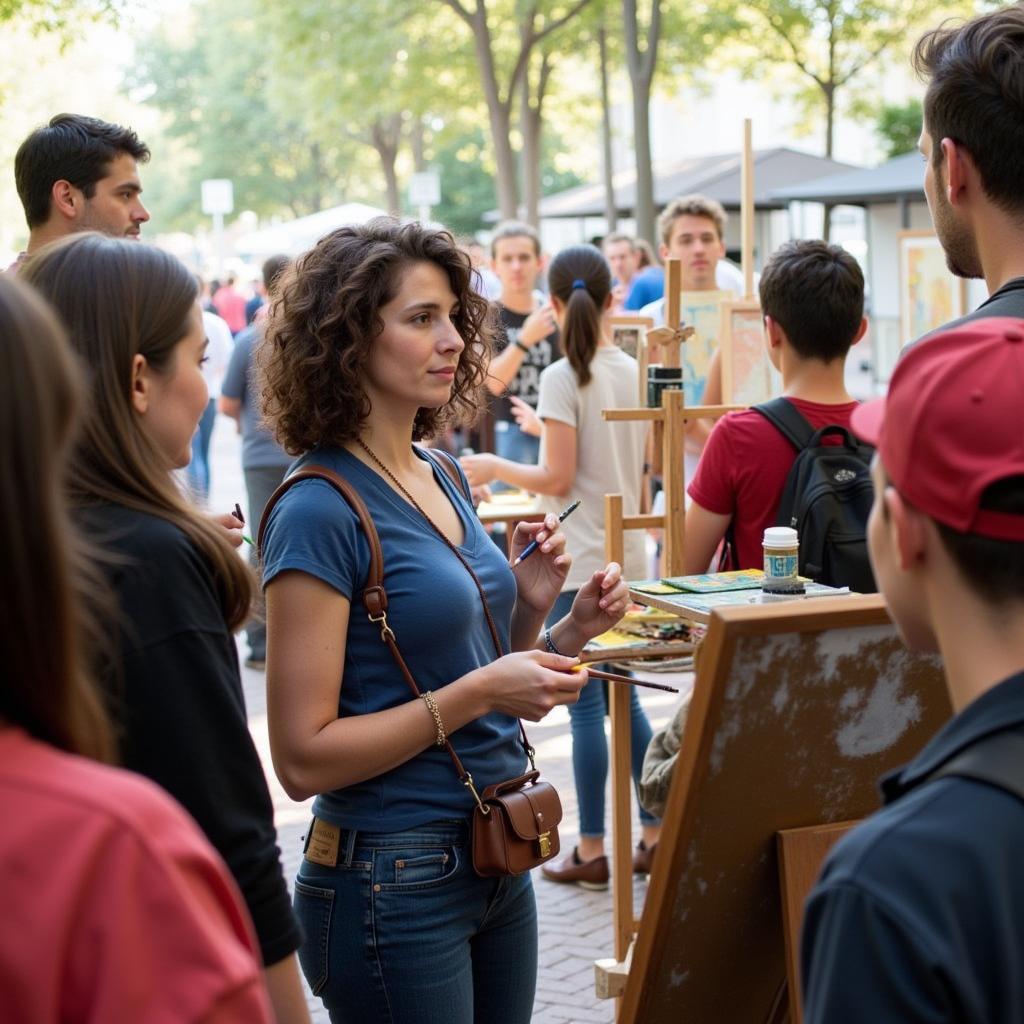Creating a Magical Kindergarten Art Room
A Kindergarten Art Room is more than just a space with easels and crayons; it’s a portal to imagination, exploration, and self-discovery. It’s where young minds transform simple materials into vibrant expressions of their inner world. This article delves into the essential elements of designing an inspiring and functional kindergarten art room, fostering creativity, and nurturing a lifelong love for art. Check out this amazing art center kindergarten for inspiration.
Designing an Inspiring Kindergarten Art Room
Creating a stimulating art room requires thoughtful planning and consideration of the developmental needs of kindergarteners. The environment should be inviting, accessible, and encourage exploration. Think bright colors, open spaces, and designated areas for different art activities.
- Organization is Key: Implement a system for storing and accessing art supplies. Clearly labeled bins, shelves, and drying racks make it easy for children to find what they need and participate in clean-up.
- Embrace Flexibility: Design the space to accommodate various art projects and group activities. Consider mobile furniture and adaptable work surfaces to maximize space utilization.
- Safety First: Ensure the art room is a safe environment for young artists. Store potentially hazardous materials securely and establish clear rules for using tools and equipment.
After setting up your space, be sure to explore exciting march art projects for kindergarten to fill the room with color and creativity.
Essential Art Supplies for Kindergarten
Stocking the art room with a variety of materials empowers children to explore different artistic mediums and techniques. A well-rounded selection of supplies fosters creativity and allows for diverse artistic expressions.
- Basic Essentials: Crayons, markers, paint, paper, scissors, glue, and playdough are fundamental supplies that provide a foundation for various art projects.
- Sensory Exploration: Introduce materials with different textures and properties, such as clay, fabric scraps, natural objects, and recycled materials, to encourage tactile exploration and sensory development.
- Tools of the Trade: Provide age-appropriate brushes, sponges, stamps, and other tools to help children develop fine motor skills and experiment with different artistic techniques.
Integrating Art with Other Curriculum Areas
Art education doesn’t exist in isolation. Integrating art with other subjects enriches learning experiences and provides meaningful connections across different disciplines.
- Storytelling Through Art: Encourage children to illustrate stories they’ve read or create their own visual narratives.
- Math and Art: Explore shapes, patterns, and measurements through art projects.
- Science and Art: Observe and depict natural phenomena through drawings, paintings, and sculptures.
- Social Studies and Art: Learn about different cultures and traditions by creating art inspired by various artistic styles and historical periods.
 Children Creating Artwork Related to a Story
Children Creating Artwork Related to a Story
Nurturing Creativity in the Kindergarten Art Room
The kindergarten art room should be a haven for creativity and self-expression. Creating a supportive and encouraging environment helps children develop confidence in their artistic abilities.
- Process over Product: Emphasize the joy of exploration and experimentation rather than focusing solely on the finished product.
- Embrace Mistakes: Encourage children to see mistakes as opportunities for learning and growth.
- Celebrate Individuality: Foster a culture of appreciation for diverse artistic expressions and styles. Value each child’s unique perspective and encourage them to celebrate their own creativity.
For further information regarding art education, the new york state art standards provide valuable insights.
Conclusion
A well-designed kindergarten art room is a crucial space for nurturing creativity, fostering self-expression, and developing essential skills in young learners. By providing a stimulating environment, a diverse range of materials, and a supportive atmosphere, we can empower kindergarteners to become confident and enthusiastic artists. Investing in a quality kindergarten art room is an investment in the future of our young artists.
FAQ
- What are the essential art supplies for a kindergarten art room?
- How can I integrate art with other subjects in the curriculum?
- What are some tips for organizing a kindergarten art room effectively?
- How can I encourage creativity in my kindergarten art students?
- What are the benefits of a dedicated art room for kindergarteners?
- How can I create a safe art room environment for young children?
- What are some age-appropriate art projects for kindergarteners?
Common Scenarios and Questions:
-
Scenario: A child is frustrated because their artwork doesn’t look like what they envisioned.
- Question: How can I help a child who is struggling with their art project?
-
Scenario: A child is reluctant to participate in art activities.
- Question: How can I encourage a shy or reluctant child to engage in art?
-
Scenario: The art room is constantly messy and disorganized.
- Question: What strategies can I use to maintain order and cleanliness in the art room?
Further Exploration
Explore more articles on our website related to early childhood education and art integration. You might be interested in articles about specific art projects, classroom management techniques, or creating thematic learning experiences.
Contact Us
For any assistance or further inquiries, feel free to contact us at Phone Number: 02462573573, Email: danteum@gmail.com or visit us at Savico Megamall, 7-9 Đ. Nguyễn Văn Linh, Gia Thụy, Long Biên, Hà Nội 10000, Việt Nam. We have a 24/7 customer support team.



